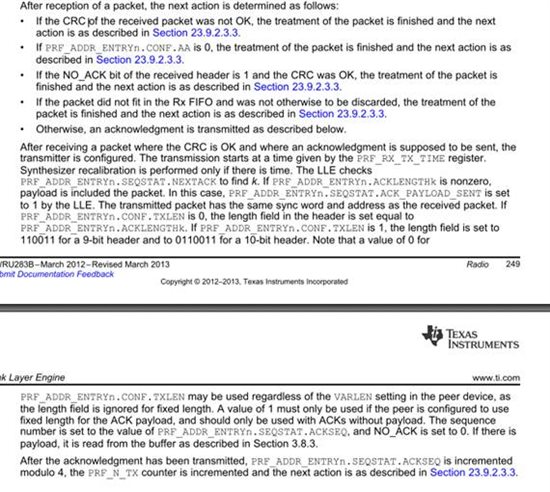The CC2543 has the ability to send a (max) 32-char acknowledge message (ACK) upon receipt of an incoming RF message. To do this, it uses one of two 32-char buffers stored in each of the eight RF-RAM "address" pages. I want to customize the ACK depending on data in the incoming message. For example, I want the sender to include a message ID in the incoming message and I want to return that ID in the ACK so the sender knows the message was received.
The problem is, I don't find a way of interrupting the ACK transmission. There doesn't appear to be an interrupt that would let me read the RX buffer, extract the message ID, and then insert it into the RF-RAM used for ACK before the ACK is sent.
Anyone have an idea how to do this, other than disabling auto-ACK and handling the send/ack myself? This seems like such an obvious thing to need to do that I can't believe it isn't in the radio automation somewhere.


